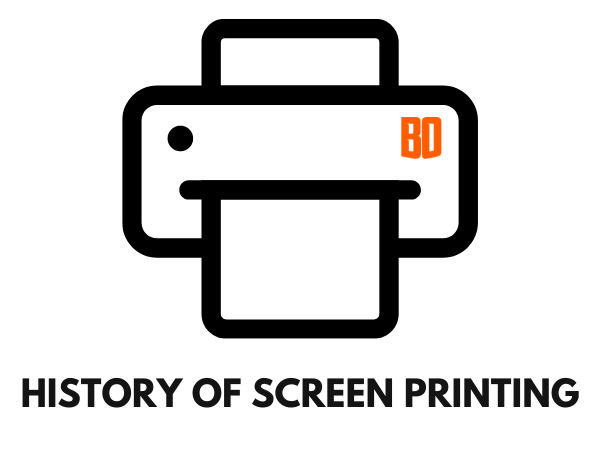History of Screen Printing
-
Screen printing has been a form of self-expression since the dawn of time, with artists using the process to convey their political views at times of societal turmoil. Around 960 AD, during the Song Dynasty in China, screen printing first appeared. Even older versions of stenciling, a crucial step in the screen printing process, have, nevertheless, been discovered in ancient cave paintings. Diverse equipment, materials, and procedures are used to produce the varied and aesthetically pleasing results that are possible with screen printing. Today, artists, members of the armed forces, and experts in the printing sector employ screen printing to produce anything from posters and stencil graffiti to t-shirts and signs.
Screen Printing Early History
It has been estimated that screen-printing first appeared in China approximately 1,050 years ago, during the Song Dynasty. Significant improvements in painting, creative expression, the development of a fleet, and the introduction of paper money all occurred during this time period. Screen-printing, which employs mesh and ink-blocking processes, developed from stenciling, which dates back to the ancient era when early people produced hand stencils using a variety of ways. The similarities between stenciling and screen-printing are clear, and European cave walls exhibit the earliest manifestation of the creative expression that gave rise to screen-printing.
Screen Printing 1960s to Present
The Civil Rights movement, women’s rights activism, and antiwar movements all gained traction in the 1960s both in the United States and abroad. These groups needed a platform to communicate their views, and silkscreen printing evolved as a potent technique for producing eye-catching visuals. In place of slower methods like painting, students and artists started to use screen-printing processes to swiftly and readily create vibrant graphics. As a result, screen-printed clothing, t-shirts, and other materials became widely used for artistic expression. Andy Warhol’s 1962 Marilyn Diptych, which paradoxically became an icon of an icon, is one of the most well-known instances of silkscreen artwork. Students’ interest in the screen-printing method has recently increased, and the Environmental Protection Agency
Printing technique
A stencil composed of geometrical elements, alphabetic characters, or words is applied to a mesh-covered frame, or screen, to produce a design when employing the screen-printing process. The substrate, which is the item to be printed on, such as a shirt or poster, is placed on top of the stencil-blocked area of the screen. To create a sharp picture on the substrate, ink is placed to the screen and stencil and then forced through the mesh using a squeegee.
- Screen Printing (Techniques included)
- The Process of Screen-printing
- Screen Printing – Case Study 1
- Screen Printing Process Design of Experiments for Fine Line Printing of Thick Film Ceramic Substrates
- Direct to Garment Printing
- Textile Printing
Stenciling techniques
Artists have access to a variety of stenciling techniques, each with special characteristics that may be utilized to create diverse visual effects. Direct photographic emulsion is one of the most often used techniques; it involves stencils, mesh screens, and a source of light. From prehistoric red ochre cave prints to contemporary aerosol graffiti, stenciling techniques have seen major modifications and advancements throughout history. Today’s printmakers and artists have access to a broad range of methods including airbrushing, micro-stenciling, and photographic emulsion, opening up countless creative options.
- Direct Photo Emulsion Stencils
- A Micro Stenciling Process
- Airbrush/Stencil
- What Is Stencil Graffiti?
- Hand Paintings and Symbols in Rock Art
Screen-printing materials
A variety of equipment, materials, and supplies are required to complete the screen-printing process. Screens, inks, glues, and squeegees are the fundamental tools needed to create screen-printed pictures. There are several inks available, including water-based, plastisol, and discharge inks, which offer various effects and levels of color saturation and enable artists to produce unique outcomes. In addition to using colored inks, artists also utilize glosses and metallic inks to produce distinctive finishes.
- Screen-printing Materials and Vocabulary
- Silkscreen Supply List
- Plastisol vs. Water-based Ink for Textile Printing
- Silk Screen Printing
- Tools and Technology
Semiconducting materials
Electronic screen printing is now a sophisticated process that provides several benefits to both producers and the environment. It is environmentally sustainable and aids in the removal of particles and solvents, leaving surfaces free of lint. This process is used to create components including screen-printed solar cells, solar photovoltaics, and solar wafers and depends on a number of semiconducting materials.
- What Is Semiconducting?
- Screen Printed Solar Cells
- Solar Photovoltaics (PDF)
- Screen Printing
- Solar Cells


